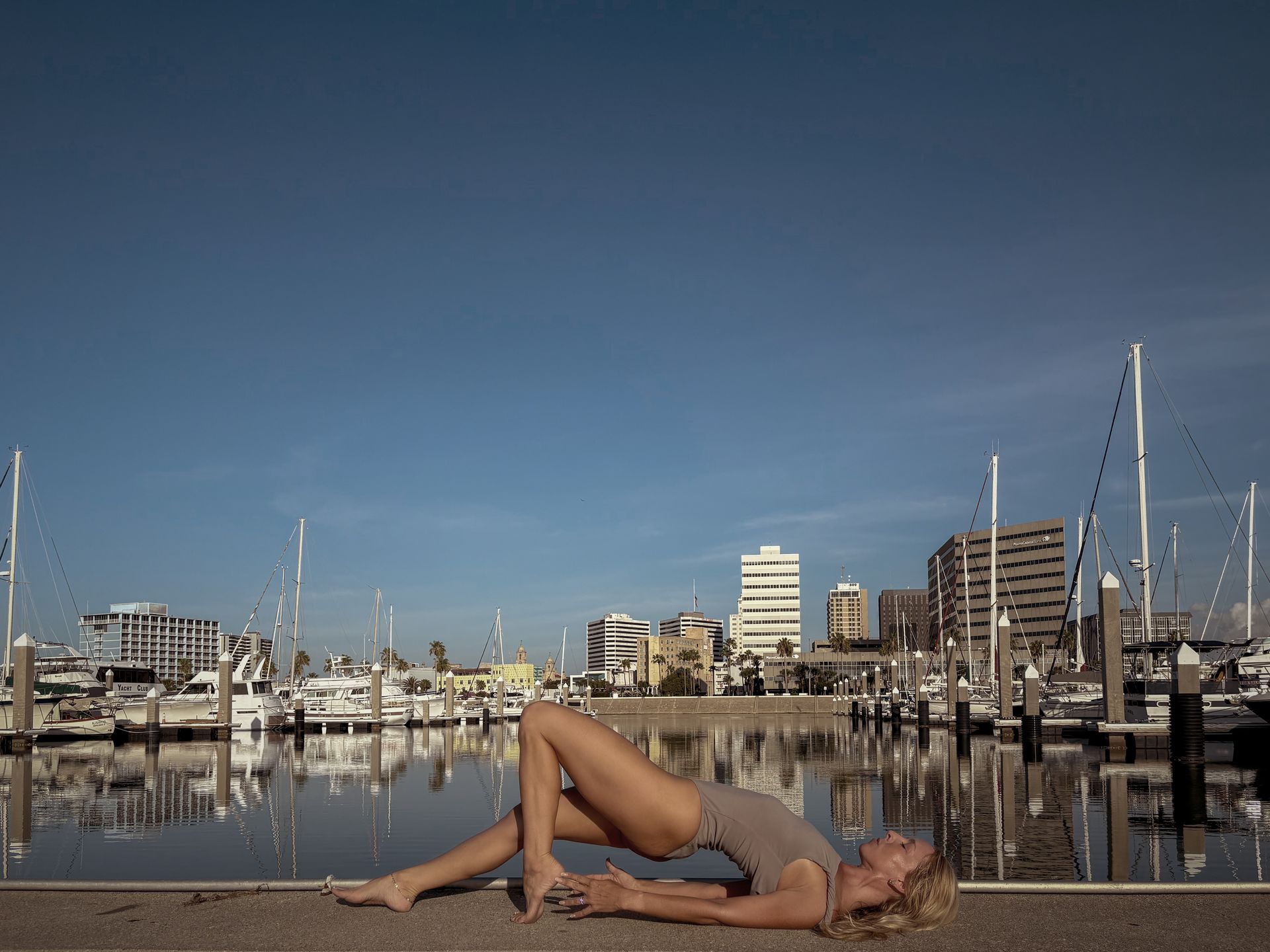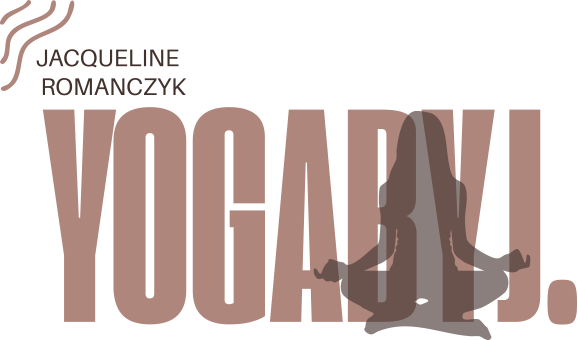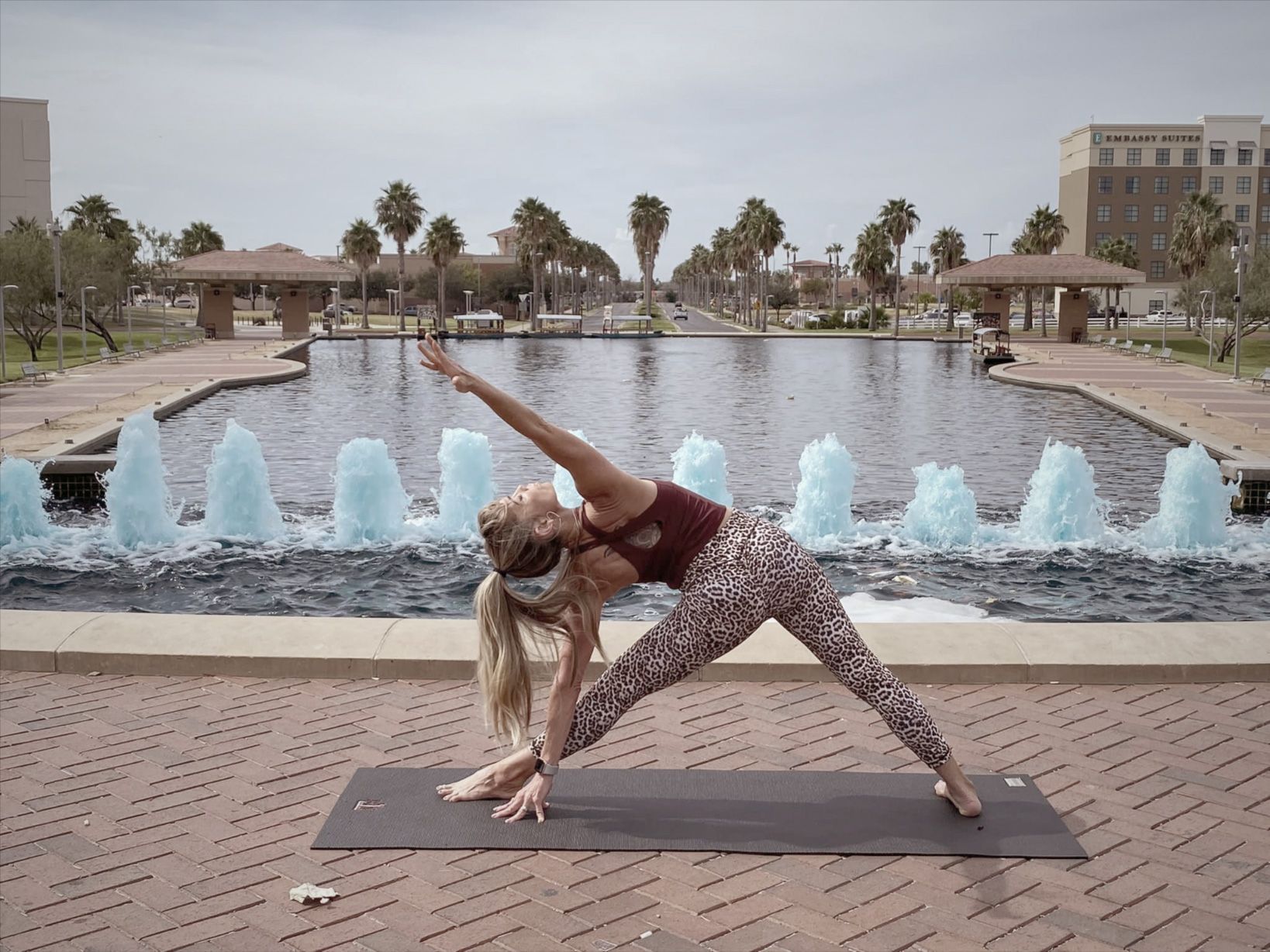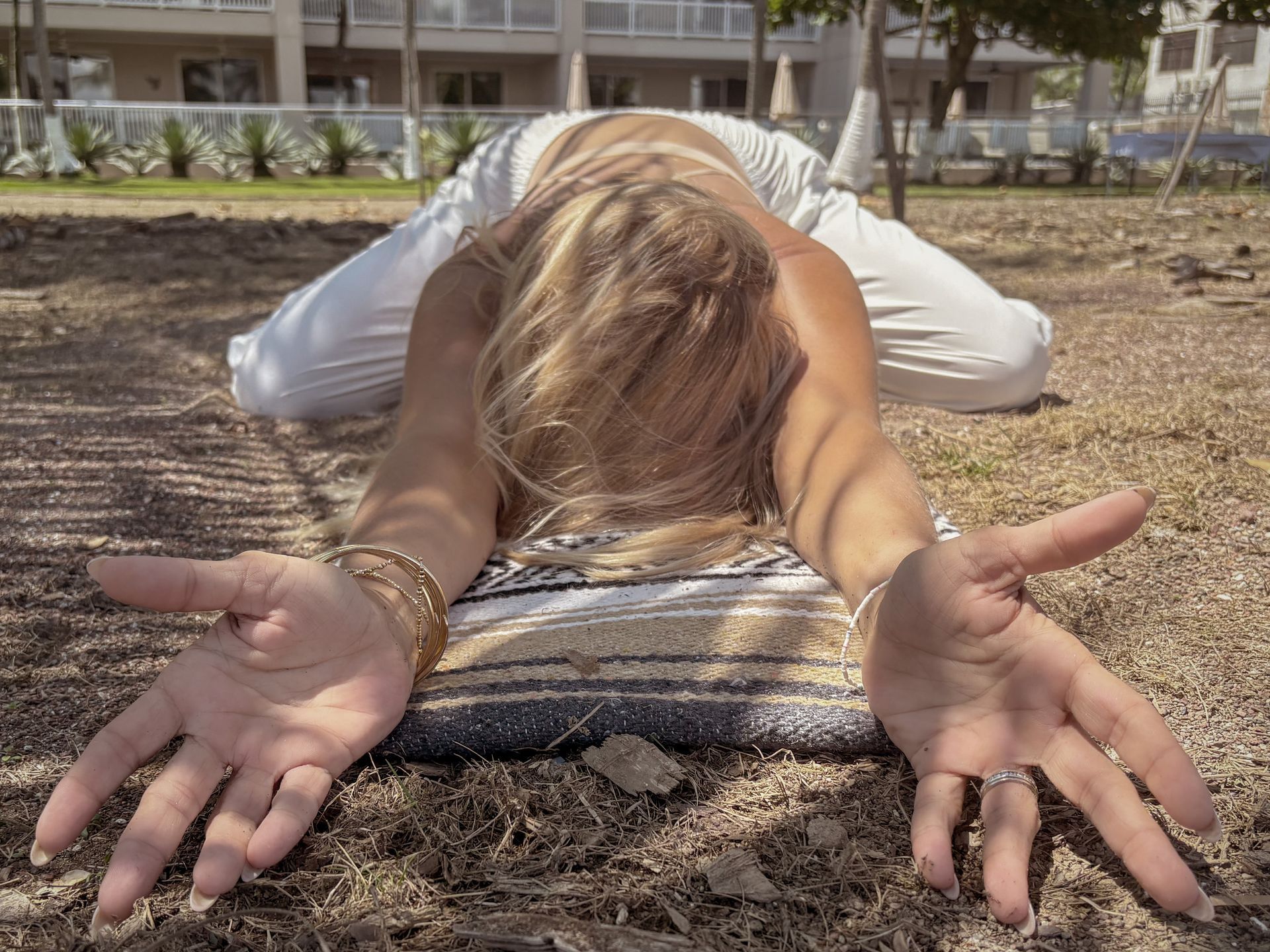
It's not just slow movement...
When starting my yoga journey, I thought yoga had to look a certain way—fluid vinyasas, strong shapes, deep flexibility. And don’t get me wrong, there’s beauty in all of that. But when I found my way back to the mat after loss, trauma, and the quiet ache of rebuilding, something shifted.
I didn’t want perfection.
I didn’t want performance.
I just wanted to feel safe in my body again.
That’s when somatic yoga found me.
So… what is somatic yoga?
At its core, somatic yoga is about listening—to your breath, your sensations, your body’s inner rhythms. It’s not about pushing through or achieving a perfect pose. It’s about curiosity. About tuning in. About asking, “What do I feel right now? And what do I need?”
It weaves together gentle movement, nervous system awareness, and breath-based practices to support emotional regulation and body-mind reconnection. Sometimes it looks like swaying, rolling, circling. Sometimes it looks like stillness. Sometimes it looks like crying on your mat because you finally feel safe enough to exhale.
It’s less “perform” and more “be.”
Somatic yoga isn’t about “getting it right.” There’s no gold star for the deepest twist or the strongest core. It’s more about letting your body lead the way, even when it whispers instead of shouts.
Lately, my yoga mat has turned into a full-blown sensory playground—and somatic movement is the main character.
I’ll be honest: I’ve had moments where I’ve rolled on my side and stayed there for 10 minutes, breathing into my ribs. No big pose. No big moment. But it felt like coming home.
Other times, I’ll play with shapes I used to hold tightly, but now move into like a dance—a slow, spiraled kind of movement that unpacks something emotional from my shoulders or softens the gripping in my jaw.
This practice has taught me to stop asking, “Am I doing it right?” and start asking, “Does this feel honest?”
Somatic yoga is also…
- Nervous system friendly (no overdrive, no overwhelm)
- Great for trauma recovery, grief work, and emotional healing
- Full of micro-movements that lead to macro shifts
- A space to feel—not just function
How it shows up in my classes
In the classes I offer, somatic yoga often means:
- Moving in spirals or waves instead of straight lines
- Starting with breath, not pose
- Honoring whatever energy you bring into the space
- Creating options instead of instructions
- Building trust in your own body’s “yes” and “no”
Sometimes it gets a little sassy. Sometimes it’s sleepy and slow. But it’s always real.
Final thought:
This practice isn’t about fixing yourself.
It’s about coming home to yourself.
So if you’ve ever felt disconnected from your body, overwhelmed by fast-paced yoga, or unsure of how to start again after something hard—somatic yoga might be exactly what your body is asking for.
Come as you are.
Move like it matters.
And feel it all—softly, gently, fully.






